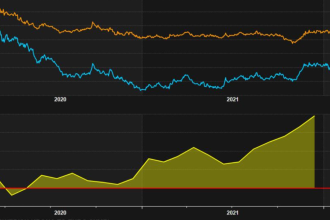Load boards refresh every few seconds, drivers line up for their next assignment, and shippers refuse to release freight without proof of active coverage. In this environment, fleets that meet pre-cleared underwriting criteria can bind commercial auto liability coverage quickly—keeping revenue flowing while competitors idle. Instant issuance hinges on disciplined data, smart software, and a policy partner aligned with transportation carrier priorities rather than quarterly shareholder reports.
Why Speed Protects Margin
Every hour a truck sits waiting for a certificate drains fuel, labour, and broker goodwill. Slow endorsements create empty miles that no surcharge can recoup. Large stock insurers often batch requests overnight, so a noon pickup disappears while paperwork lags. However, there are insurance companies that address this issue. For example, STAR Mutual RRG reinvests in rapid rating tools as faster service lowers combined costs for the collective. When fleets share accurate operational data early in the cycle with their insurance agent, STAR Mutual RRG can approve fresh limits and file them with state portals quickly.
Three Steps Behind Instant Auto Liability Coverage
Instant coverage works through a simple, fast process:
Step 1: Data Intake
Driver records, VINs, and loss runs are pulled into one clean file for accurate processing.
Step 2: Risk Scoring
The system scores risk in seconds using real time comparisons with past losses.
Step 3: Policy Issuance
The policy is issued, filed with states, and the certificate of insurance reaches dispatch before the truck moves.
Preparing a Data Vault That Never Slows You Down
Speed depends on clean and organized files. Use one folder per unit labeled by VIN with subfolders for inspections, maintenance, and registration. Keep licenses and training records in a roster that updates automatically with each upload. Store claims in timeline order so underwriters see full context quickly. Quarterly checks turn last-minute scrambles into smooth renewals.
A well-structured vault adds value across operations. Procurement moves faster, recalls stay on schedule, and legal teams find key documents without delay.
Integrating Instant Proof into Everyday Dispatch
A certificate buried in an inbox still wastes time. Embed the live link in each trip within the transportation‑management system, and mirror it to the in‑cab tablet for offline access at rural scales. Dispatchers should open the link as part of load assignment. It takes ten seconds and prevents frantic calls from the roadside when bandwidth drops. Drivers then present a QR‑coded card that inspectors verify on the spot, shaving minutes off every checkpoint.
Shippers notice, too. Seeing an always‑current certificate behind a secure link signals professionalism that edges out carriers who rely on scanned PDFs dated last quarter.
Value Beyond the Binder
Fast coverage delivers lasting gains. Trucks keep moving, drivers stay longer, and finance avoids broker markups. Safety teams prevent penalties from brief gaps. A good insurer can return value through stable rates instead of investor payouts, so savings build over time. STAR Mutual RRG updates pricing as risk changes, using proprietary underwriting to match the rhythm of modern fleet operations.
One Policy for Many Vehicle Classes and States
A regional carrier might run box trucks in Miami, dump trucks on Texas construction sites, and car haulers between auction hubs. Maintaining separate carriers for each class drains administrative capital. Instant issuance only delivers full value when the same backbone covers the fleet’s mixed profile. STAR Mutual RRG lists coverage for box trucks, flatbeds, car haulers, dump trucks, and several specialised classes across dozens of states. Adding or retiring a unit becomes a matter of a quick endorsement, so the compliance team focuses on safety instead of policy gymnastics.
Implementation Road Map
Rolling out instant liability should feel like a phased software deployment, not a weekend fire drill. Follow these milestones to avoid bottlenecks and realize ROI within the first renewal cycle.
- Audit File Completeness. Verify every power unit has VIN, weight, and inspection date recorded in uniform format.
- Train Dispatch on Live‑Link Protocols. Include link checks in the assignment script. Repetition cements habit.
- Brief Drivers on QR Presentation. Five‑minute demo at monthly safety talk shows where to find the digital card offline.
- Track Time‑to‑Bind Metrics. Report the average minutes saved per endorsement to leadership and reinvest a slice of gains in further automation.
After ninety days, revisit each milestone, document lessons, and tighten any gaps before scaling to additional terminals.
Conclusion
Instant commercial auto liability turns insurance from a box to check into a competitive advantage. When clean data meets responsive insurance pricing tools, fleets avoid long wait times, win loads faster, and keep drivers on the move. In a market where seconds matter, speed shifts the balance from lost time to lasting gains.















